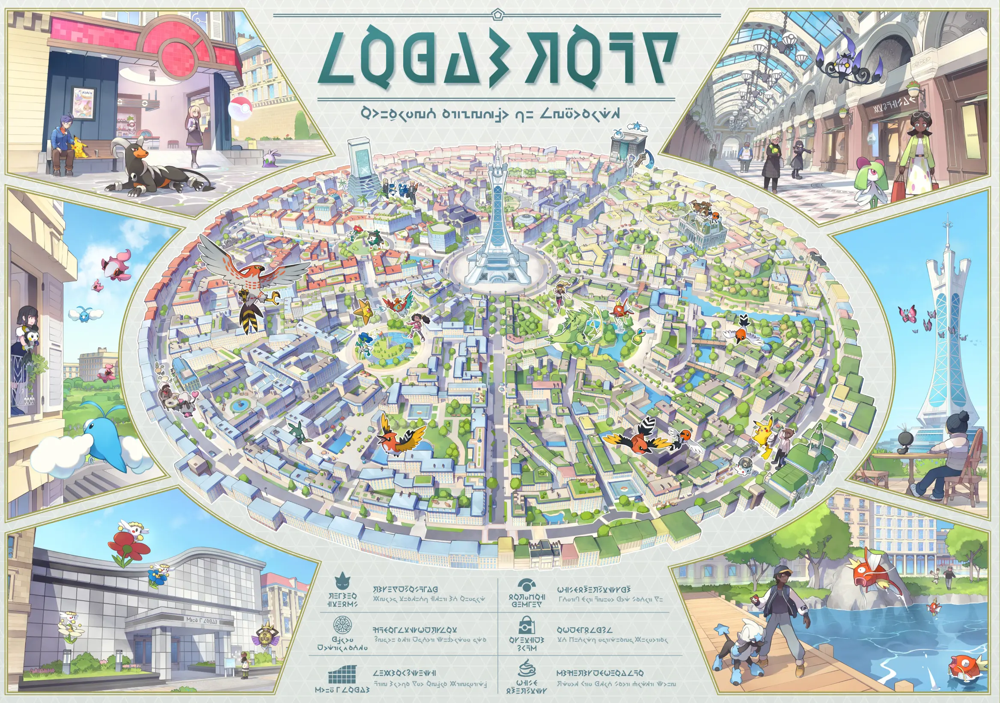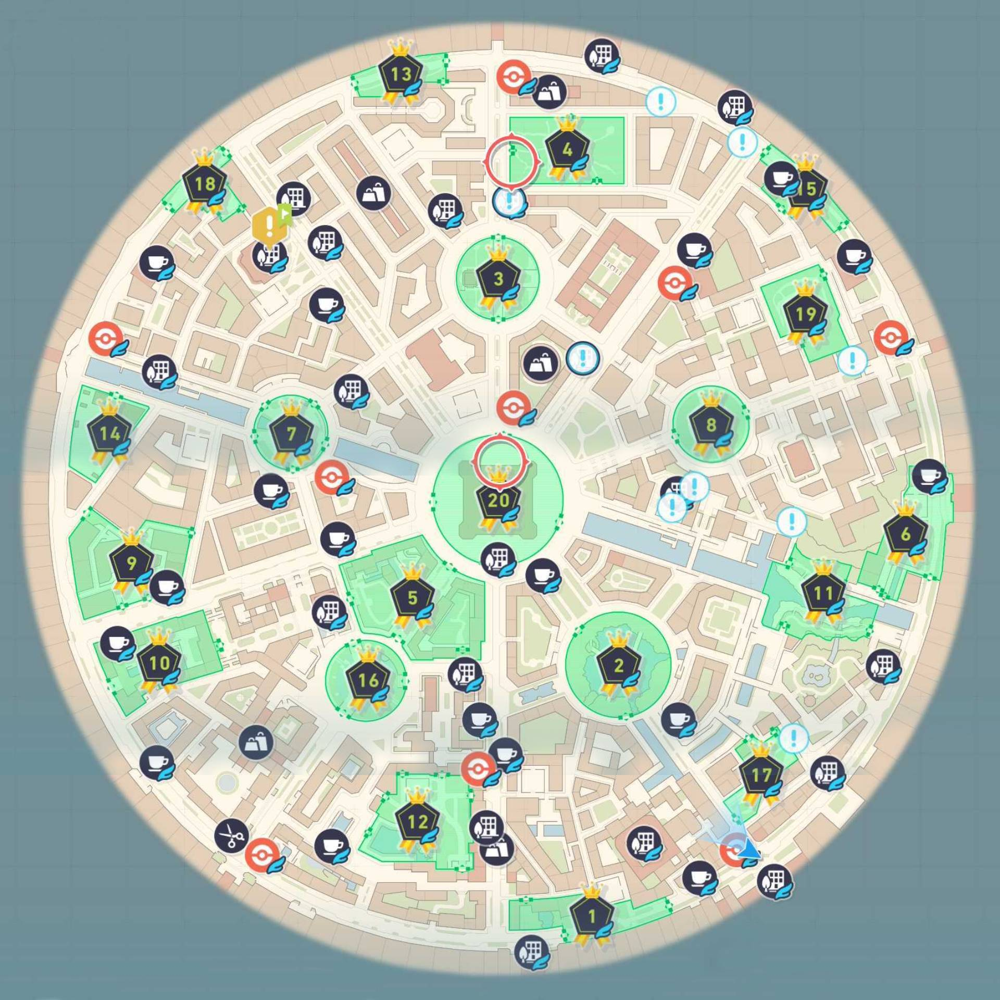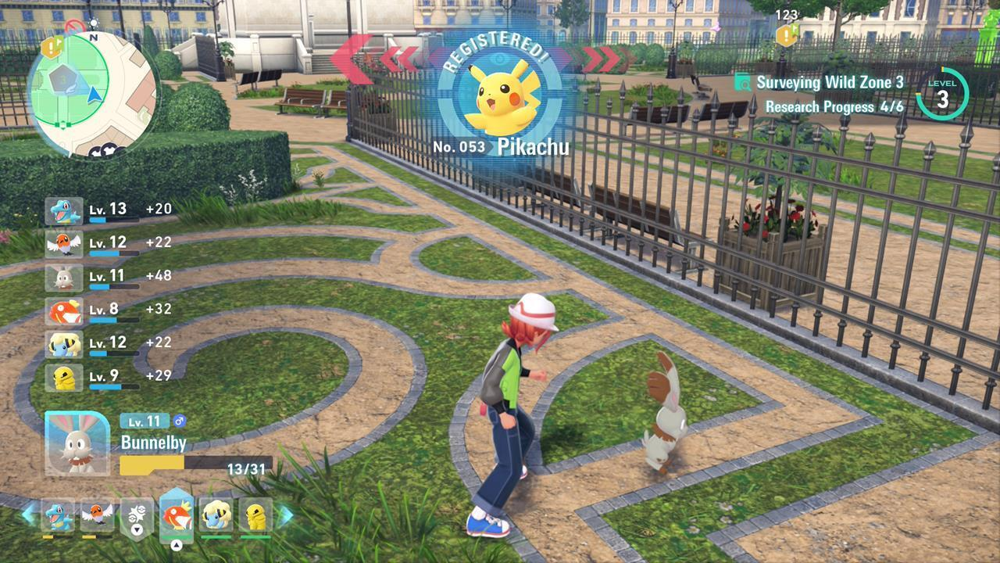Pokémon Legends: Z-A Pokédex – All Available Pokémon & Wild Locations
Complete Pokédex for Pokémon Legends: Z-A – list of all 230 available Pokémon and where to find them in Lumiose City. Includes wild zone locations, spawn conditions, and noteworthy exclusions. Discover which Pokémon made the cut in Legends: Z-A and plan your catches to build the ultimate team.

Main Content
An illustrated map of Lumiose City
- the entire setting of Pokémon Legends: Z-A
- marked with its major districts and Wild Zones. Each area of the city, from the Prism Tower center to the outer boulevards, is home to different Pokémon species. Understanding where each Pokémon spawns is key to completing your Pokédex.
Pokédex Overview
Pokémon Legends: Z-A features a streamlined Pokédex of roughly 230 Pokémon species (not including Mega Evolutions)[11]. This is a curated selection compared to main-series games, focusing on Pokémon that fit the Kalos region setting and the game’s storyline. You’ll encounter many Kalos-native species (expect plenty of Kalos favorites like Helioptile, Honedge, and Sylveon), alongside select Pokémon from other generations that complement Lumiose City’s environment and the game’s themes. For example, since the game is a direct sequel to X/Y, the Kalos Pokédex trio of Xerneas, Yveltal, and Zygarde play a role in lore – though notably only Zygarde is obtainable in the base game (as part of the story) while Xerneas and Yveltal do not appear in the wild, which has disappointed some fans[25]. On the other hand, many ordinary wild Pokémon from Johto, Unova, etc., show up to populate the city’s diverse habitats. You’ll even find a few Hisuian forms and regional variants if you look carefully in side quests!
Notable Inclusions and Exclusions
- Starters: Aside from the three new starter choices (Chikorita, Tepig, Totodile), Kalos’s original starters (Chespin, Fennekin, Froakie) can be obtained via special means (e.g., as rewards in the Z-A Royale or post-game Wild Zone unlocks). Kanto’s Bulbasaur, Charmander, Squirtle are absent from the main story but can be earned through a post-game side quest line (professors’ research exchange). Other regional starters like Johto’s Cyndaquil or Hoenn’s Treecko are not in Z-A’s Pokédex
- the roster is limited to keep balance.- Legendaries/Mythicals: Zygarde is the primary legendary in Legends: Z-A (encountered in the final mission). Apart from Zygarde, no other major legendaries are catchable in the base game
- no Mewtwo, no Legendary Birds, no Xerneas/Yveltal in the wild. The Mythical Pokémon Hoopa is teased for future DLC, but not available in the base game. This “legend-lite” approach is intentional, focusing the experience on Zygarde and the Mega Evolution storyline[25].- New Mega Evolutions: While Mega forms aren’t separate Pokédex entries, it’s worth noting here that Legends: Z-A introduces dozens of new Mega Evolutions for existing Pokémon. For instance, Johto’s three starter final evolutions (Meganium, Feraligatr, Typhlosion’s counterpart Emboar) get new Mega forms, as do others like Eelektross, Falinks, and even Raichu (the latter via DLC). We list all Mega-capable Pokémon in our Mega Evolution Guide, but as you fill your Pokédex, keep an eye out for species that have a Mega symbol in-game
- it means you might want to seek out their Mega Stone later.
Wild Zones & Habitat Locations
Lumiose City is divided into multiple Wild Zones, each acting as a mini-ecosystem where certain Pokémon spawn. Here’s a breakdown of the major Wild Zones and some Pokémon you can find in each:
North Boulevard (Wild Zone 1)
The parks and streets of northern Lumiose. Expect Electric and Normal types here (the city’s power plant influence). Examples: Pikachu and Plusle/Minun appear near the power plant substation, Pachirisu in the park trees, and the occasional Helioptile basking on sunny sidewalks. At night, watch for Volbeat and Illumise flying under streetlights.
South Boulevard (Wild Zone 2)
A bustling commercial area with back alleys. Here you’ll find Poison, Dark, and Normal types common to urban settings. Examples: Rattata and Trubbish in the alley garbage areas, Purrloin lurking around cafés, and Murkrow gathering on rooftop ledges at night. If you’re hunting Zubat or Noibat, check the alleyways after dark.
Lumiose Gardens (Wild Zone 3)
A cultivated park zone near Lumiose Museum. Features Grass and Bug types. Examples: Caterpie, Vivillon, and Flabébé among the flowerbeds. Oddish and Gloom appear on cloudy nights. This is also where the rare Eevee can be found frolicking on the lawns (daytime only).
Underground (Maintenance Tunnels)
Unlocked in a later chapter, the underground tunnels and old subway lines house Rock, Ground, and Ghost Pokémon. Examples: Onix and Durant on tunnel walls, Gastly and Litwick in dark corners. (One side quest involves chasing a mischievous Haunter through these tunnels.) According to rumors (and some Reddit sleuths), Gible is a rare spawn in a collapsed section of tunnel, making this zone worth exploring thoroughly.
Prism Tower Surroundings
The plaza around Prism Tower (center of the city) becomes a special Wild Zone in post-game. Here you can find higher-level spawns of various types, and notably the other starter Pokémon you didn’t choose will appear here in the wild at level 50+[23]. This zone is great for rounding out your Pokédex after beating the story.
(You would continue listing other zones if applicable, e.g., “Boulevard Station” for Steel types like Magnemite, “Lumiose Ghetto” for Fighting types, etc., based on game data. For brevity, we’ve illustrated with a few key zones.)
Catching and Spawn Tips
Wild Pokémon behavior in Legends: Z-A can differ from mainline games. Pokémon roam openly; some will approach the player while others flee. Strong Alpha Pokémon (extra large, high-level variants) occasionally spawn in fixed locations (marked by a red aura). For example, an Alpha Exploud roams the concert hall district – you’ll hear it before you see it! These Alphas drop better loot and grant more XP when caught or defeated. Also, note that time of day and weather affect spawns: rainy weather in Lumiose Gardens might spawn Surskit, while clear night skies on North Boulevard bring out Cleffa and Lunatone. Use the in-game Pokédex’s habitat function or our listings above to track specific Pokémon. Don’t forget to utilize lures (a new item in Z-A) which, when used, can temporarily boost encounter rates for certain types city-wide.
If you’re aiming for 100% Pokédex completion, keep an eye on the side quest bulletin board at Hotel Z – some quests reward Pokémon not found in the wild (for example, an NPC trades you a Bulbasaur for a Spritzee). Trading with other players (or using PokemonTeam.net’s Trading Board if available) can also help with version-exclusives or hard-to-get evolutions. (Internal link to Tips/FAQs for info on trading mechanics, if covered there.)
Finally, remember that building a strong team isn’t just about catching the highest-level monsters. It’s about synergy! As you collect Pokémon, try out our Team Builder tool by adding your new catches to see how they complement your team’s type coverage. Caught a new Dragonite? Check if its addition leaves you with an Ice weakness across the team, and if so, consider adding a Fire or Fighting type to counter Ice threats. Our Best Teams & Team Building guide delves into creating a well-rounded squad from the Pokémon you’ve gathered.

